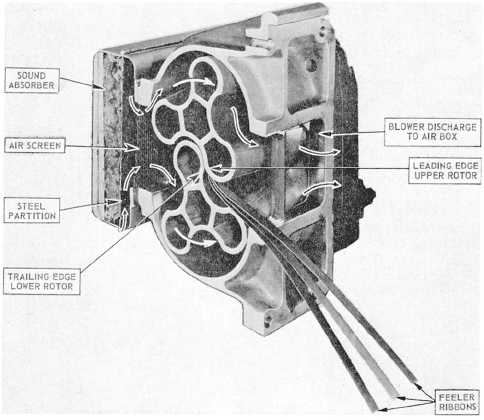ENGINEMAN 1 & C
A different type of drive gear mechanism is
used for a four-stroke cycle, V-type gasoline
engine. The camshaft gears are driven through a
train of bevel gears from the crankshaft. This ar-
rangement serves to drive not only the camshaft
but also other accessories, such as a magneto, or
distributor, a fuel pump, and a tachometer. An
additional gear, called the oil and freshwater
pump drive gear, meshes with the crankshaft gear.
The causes of gear failure (improper lubrica-
tion, corrosion, misalignment of parts, torsional
vibration, excessive backlash, wiped gear bearings
and bushing, metal obstructions, and improper
manufacturing procedures) are basically the same
as the causes of similar troubles in other engine
parts. The best method of prevention is to adhere
to the prescribed maintenance procedures and
follow the instructions given in the manufacturer’s
technical manual.
Maintenance and repair of gear trains involve
a thorough check (for scoring, wearing, pitting,
etc.) of the gear shafts, bushings and bearings,
and gear teeth during each periodic inspection.
Be sure that the oil passages are clear, and that
the woodruff keys, dowel pins, and other lock-
ing devices are secured to a tight fit in order to
prevent longitudinal gear movement. It is essen-
tial that all broken or chipped parts be removed
from the lubrication system before new gears are
installed.
An engine must not be barred over while the
camshaft actuating gears are removed from the
train. Should the engine be barred over, there is
75.239
Figure 3-25.—Checking clearance of positive displacement blower lobes.
3-38


